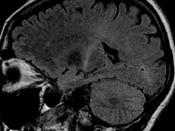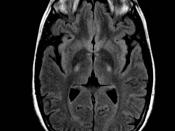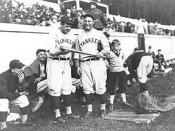Amyotrophic Lateral Sclerosis (ALS), also known as Lou Gehrig's Disease, is a life threatening neurodegenerative disease. ALS occurs when specific nerve cells in the brain and spinal cord that control voluntary movement gradually degenerate. It could be a result of viral infections, Apoptosis (programmed cell death), trauma, and environmental toxins (Turner). The loss of these motor neurons causes the muscles under control to weaken and waste away leading to paralysis. ALS reveals itself in different ways depending on which muscles weaken first.
ALS is characterized by weakness and thinning of the skeletal muscles of the body. When motor neurons die, the muscles are no longer nourished and weakness occurs (www.projectals.org). The disease generally begins with a gradual decline in strength. One day, the individual notices that something isn't right. Anything could be a signal: Perhaps the person stumbled while walking, had difficulty turning a key in a lock, or noticed that they were slurring their words.
When the upper motor neurons are affected, the signs are usually stiffness, plasticity, weakness, and brisk reflexes. The muscles responsible for speech, chewing, and swallowing can also be affected with symptoms like slurring of speech, difficulty moving the tongue, choking on liquids and food, and difficulty controlling emotions. The lower motor units are located in the spinal cord. When the lower motor neurons are affected, signs are muscle twitching, muscle cramps, weakness, and muscle wasting. Other symptoms are weakness in the hands, arms, feet, and a decreased ability to breathe comfortably (Lester).
Though there is no known cure for ALS, there are many treatments and different drugs being tested. About thirty years ago, modified snake venom was proposed as a treatment for ALS. Many patients were treated because the scientists involved believed that the drug worked, though there was no proof that...


